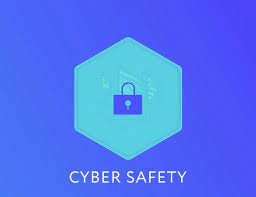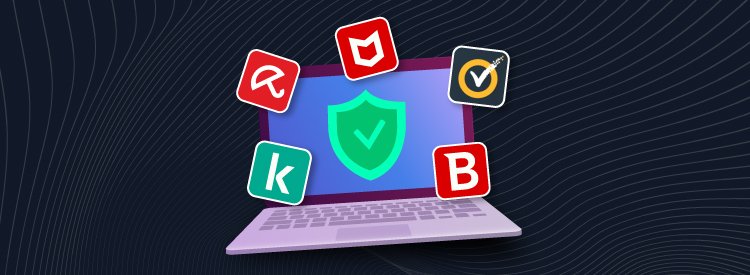Cyber Safety And Children Safety
chool-age children like going online to look at videos, play games and connect with friends and family. They might also be using the internet for schoolwork and homework. They can do this using computers, mobile phones, tablets, TVs and other internet-connected devices, including toys. Because school-age children are starting to be independent online and might go online unsupervised, there are more internet safety risks for them than there are for younger children. There are particular risks if your child uses the internet to communicate with others – for example, on social media or within games. When you take some practical internet safety precautions, you protect your child from potentially harmful or inappropriate content and activities. And your child gets to make the most of their online experience, with its potential for learning, exploring, being creative and connecting with others.
Internet safety risks for school-age children
There are four main kinds of internet risks for children.
Content risks For school-age children these risks include things that they might find upsetting, disgusting or otherwise uncomfortable, if they come across them accidentally. This might include sexual content in games, pornography, images of cruelty to animals, and real or simulated violence.
Contact risksThese risks include children coming into contact with people they don’t know or with adults posing as children online. For example, a child might be persuaded to share personal information with strangers, provide contact details after clicking on pop-up messages, or meet in person with someone they’ve met online.
Conduct risksThese risks include children acting in ways that might hurt others, or being the victim of this kind of behaviour. For example, a child might destroy a game that a friend or sibling has created. Another conduct risk is accidentally making in-app purchases.
Contract risksThese risks include children signing up to unfair contracts, terms or conditions that they aren’t aware of or don’t understand. For example, children might click a button that allows a business to send them inappropriate marketing messages or collect their personal or family data. Or children might use a toy, app or device with weak internet security, which leaves them open to identity theft or fraud.
Protecting children from internet safety risks: tips
Create a family media plan. It’s best to create your plan with your child and ask them for suggestions. Your plan could cover things like screen-free areas in your house, internet safety rules like not giving out personal information, and programs and apps that are OK for your child to use.
Use child-friendly search engines like Kiddle or Kidtopia, or content providers like ABC Kids, CBeebies, YouTube Kids and KIDOZ, or messaging apps like Messenger Kids.
Check that games, websites and TV programs are appropriate for your child. You can do this by looking at reviews on Common Sense Media.
Use the internet with your child or make sure you’re close by and aware of what your child is doing online. This way you can act quickly and reassure your child if they’re concerned or upset by something they’ve seen online.
Check privacy settings and location services, use parental controls, and use safe search settings on browsers, apps, search engines and YouTube. Limit camera and video functions so your child doesn’t accidentally take photos of themselves or others.
If you use TV streaming services, set up profiles for different household members so your child is less likely to come across inappropriate programs.
Block in-app purchases and disable one-click payment options on your devices.
Encourage all your children, including older siblings, to help each other use the internet safely and responsibly – for example, by watching only age-appropriate programs.
Pre Teens
Children aged 9-11 years often have their own devices and go online by themselves. They use digital media and the internet for doing schoolwork and homework, playing games, listening to or downloading music, and general browsing. They might be communicating with other people through in-game chat, messaging apps like Discord and social media.
Because pre-teens might be online more independently, including with older children, they might come across new internet safety risks.
Internet safety risks for pre-teens
sexually explicit content in music videos, movies or online games, or pornography
real or simulated violence
things that are designed to shock or scare
harmful user-generated content, like sites about drug use, self-harm, suicide or negative body image
fake news that seems believable.
Protecting children from internet safety risks: tips
Although your child is becoming an independent internet user, there are still some basic things you can do to protect your child from internet safety risks:
Create a family media plan. It’s best to create your plan with your child and ask them for suggestions. Your plan could cover things like screen-free areas in your house and what online behaviour is OK. If you follow the family media rules too, you’ll be role-modelling good online behaviour.
Talk with your child about ways to restrict the content they can see, like using safe search settings on browsers. You might need to show your child how to do this.
Check that games, websites and TV programs are appropriate for your child. You can do this by looking at reviews on Common Sense Media.
If you use TV streaming services, set up profiles for different household members. This can make it less likely that your child will come across inappropriate programs.
Encourage your child to use child-friendly messaging apps like Messenger Kids.
Ask your child to ‘friend’ you on social media. Friending your child means you can follow what they’re interested in and who they’re connected to online.
Find out how to make complaints about offensive or illegal online content.
It’s best to avoid using surveillance apps that let you secretly monitor your child’s online activity because this sends the message that you don’t trust your child. It’s better to talk openly about your own internet use and encourage your child to do the same.
Technical internet safety tools like internet filters don’t necessarily reduce online risk for children in this age group. Using filters at home might encourage some children to go online in unfiltered environments away from home. Also, children might feel they can’t talk to you about a negative online experience because they’re worried about getting into trouble for not using a filter.

Key Logger
Keyloggers are built for the act of keystroke logging — creating records of everything you type on a computer or mobile keyboard. These are used to quietly monitor your computer activity while you use your devices as normal. Keyloggers are used for legitimate purposes like feedback for software development but can be misused by criminals to steal your data.
Keystroke logging: Record-keeping for every key pressed on your keyboard.
Keylogger tools: Devices or programs used to log your keystrokes.
Keystroke logging is an act of tracking and recording every keystroke entry made on a computer, often without the permission or knowledge of the user. A “keystroke” is just any interaction you make with a button on your keyboard.
Keylogger toolscan either be hardware or software meant to automate the process of keystroke logging. These tools record the data sent by every keystroke into a text file to be retrieved at a later time. Some tools can record everything on your copy-cut-paste clipboard, calls, GPS data, and even microphone or camera footage.
Keyloggers are a surveillance tool with legitimate uses for personal or professional IT monitoring. Some of these uses enter an ethically questionable grey area. However, other keylogger uses are explicitly criminal.

Anti-Virus
Antivirus is a kind of software used to prevent, scan, detect and delete viruses from a computer. Once installed, most antivirus software runs automatically in the background to provide real-time protection against virus attacks.
Comprehensive virus protection programs help protect your files and hardware from malware such as worms, Trojan horses and spyware, and may also offer additional protection such as customizable firewalls and website blocking.
Antivirus programs and computer protection software are designed to evaluate data such as web pages, files, software and applications to help find and eradicate malware as quickly as possible.
Most provide real-time protection, which can protect your devices from incoming threats; scan your entire computer regularly for known threats and provide automatic updates; and identify, block and delete malicious codes and software.
Because so many activities are now conducted online and new threats emerge continuously, it’s more important than ever to install a protective antivirus program. Fortunately, there are a number of excellent products on the market today to choose from.
How does antivirus work?
Antivirus software begins operating by checking your computer programs and files against a database of known types of malware. Since new viruses are constantly created and distributed by hackers, it will also scan computers for the possibility of new or unknown type of malware threats.
Typically, most programs will use three different detection devices: specific detection, which identifies known malware; generic detection, which looks for known parts or types of malware or patterns that are related by a common codebase; and heuristic detection, which scans for unknown viruses by identifying known suspicious file structures. When the program finds a file that contains a virus, it will usually quarantine it and/or mark it for deletion, making it inaccessible and removing the risk to your device.
